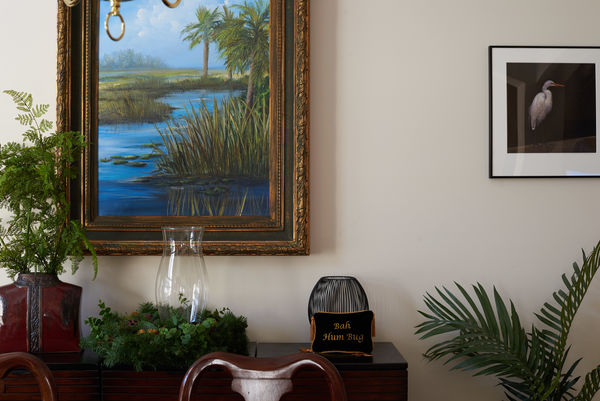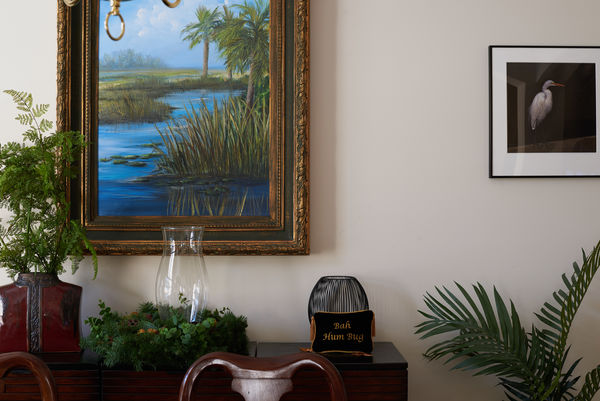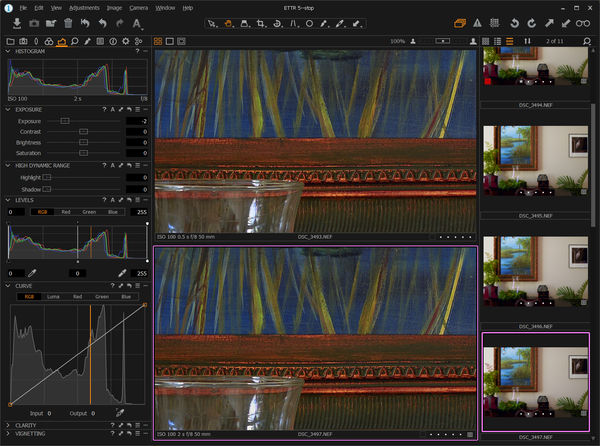ETTR/EBTR at Base ISO
Jan 11, 2017 10:53:51 #
The rationale for using ETTR/EBTR has been that it reduces noise and improves tonality.
However, the way noise is reduced is by increasing exposure. You can get the same increase in exposure by lowering the ISO (until you reach base ISO) and exposing normally. So the claim of noise reduction is not legitimate for modern cameras unless you are already at base ISO.
But how about improved tonality in the shadows because the numbers in the raw file are larger?
Here are two images from a D610 taken at base ISO (100). The first image was taken with the exposure recommended by the camera and no exposure compensation. The second image was taken with two stops of additional exposure and normalized in Capture One Pro by applying a -2 Ev exposure adjustment (see the Base ISO Session).
There is no noise visible in either image because there was sufficient exposure. Since the first image was sufficiently exposed, two more stops made no difference.
There is also no visible difference in the tonality throughout the image from the darkest to the lightest values. Download both images and compare them for yourself.
What this shows is that for a scene with a normal dynamic range (DR) there is no benefit from using ETTR/EBTR at base ISO for my camera. There may be a case for using ETTR in a scene with a wider DR, with an older camera, a camera with a smaller or inferior sensor but I am still waiting to see that demonstrated.
However, the way noise is reduced is by increasing exposure. You can get the same increase in exposure by lowering the ISO (until you reach base ISO) and exposing normally. So the claim of noise reduction is not legitimate for modern cameras unless you are already at base ISO.
But how about improved tonality in the shadows because the numbers in the raw file are larger?
Here are two images from a D610 taken at base ISO (100). The first image was taken with the exposure recommended by the camera and no exposure compensation. The second image was taken with two stops of additional exposure and normalized in Capture One Pro by applying a -2 Ev exposure adjustment (see the Base ISO Session).
There is no noise visible in either image because there was sufficient exposure. Since the first image was sufficiently exposed, two more stops made no difference.
There is also no visible difference in the tonality throughout the image from the darkest to the lightest values. Download both images and compare them for yourself.
What this shows is that for a scene with a normal dynamic range (DR) there is no benefit from using ETTR/EBTR at base ISO for my camera. There may be a case for using ETTR in a scene with a wider DR, with an older camera, a camera with a smaller or inferior sensor but I am still waiting to see that demonstrated.
Jan 11, 2017 11:02:33 #
Jan 12, 2017 12:17:11 #
Jan 12, 2017 12:33:16 #
Jan 12, 2017 13:55:08 #
selmslie wrote:
The rationale for using ETTR/EBTR has been that it... (show quote)
 Might you findings extend to beyond base ISO ??
Might you findings extend to beyond base ISO ??Jan 12, 2017 14:09:57 #
imagemeister wrote: Might you findings extend to beyond base ISO ??
Might you findings extend to beyond base ISO ??
 Might you findings extend to beyond base ISO ??
Might you findings extend to beyond base ISO ??In which direction? The D610 can go down to ISO 50 but I have never tried it. But I think you mean going in the other direction.
At ISO 200 and 400 the noise is still almost impossible to detect. At 800 you can find it if you look closely in the darker areas at 100%. You might find it sooner with other cameras.
I did several tests centered around ISO 800 where I went from 3 stops under to 2 or 3 stops over by keeping the exposure constant but changing the ISO from 100 to 6400 in one stop increments. See: http://www.uglyhedgehog.com/t-431124-1.html and http://www.uglyhedgehog.com/t-431479-1.html Because the exposure was constant the noise did not change when the ISO changed. However, in scenes with a wide dynamic range, you can't expose as far to the right as you can to the left.
You can also see a compilation of my experiments starting from here: http://www.uglyhedgehog.com/t-434431-3.html#7311900
If you want to reply, then register here. Registration is free and your account is created instantly, so you can post right away.





